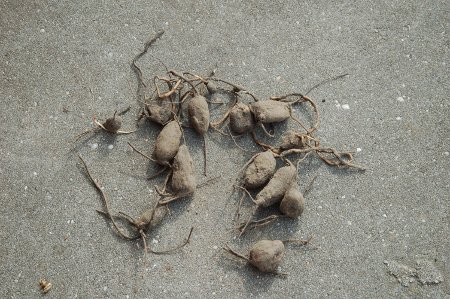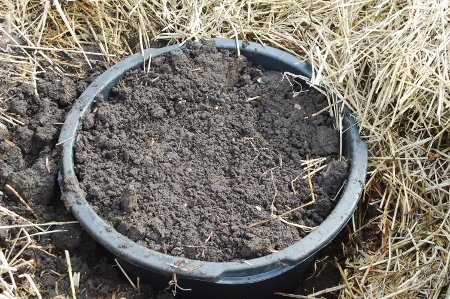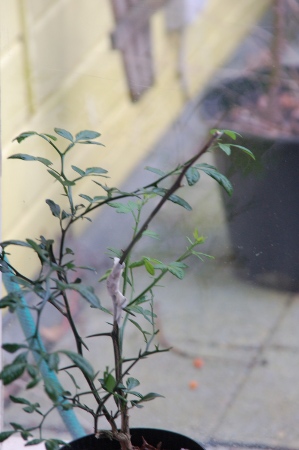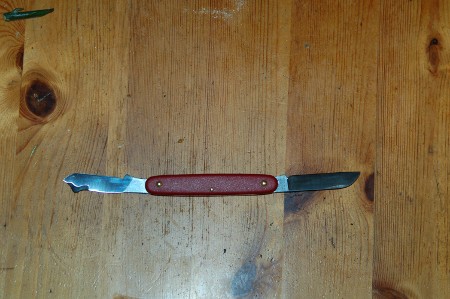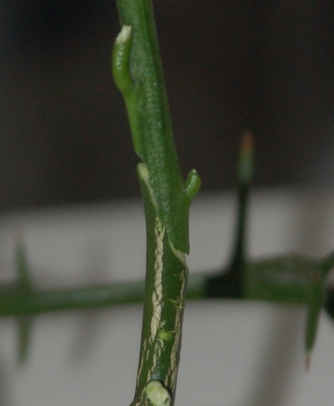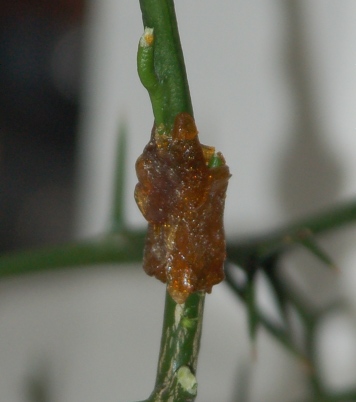In connection with Tom Wagner’s visit last year, he gave me a collection of true potato seeds from his breeding projects. In the seed tray above you see the seeds germinating, with the numbers corresponding with his various breeding lines. He explained the pedigree of many of his lines in this video.
If you are in Europe and would like to join in on the trials at the last minute, I have a few seeds left over. There’s still plenty of diversity in these seeds, but you need to understand to some extent you would be getting the leftovers. If you are interested, send me an email. As part of participating you would be expected to stay in touch and let us know how things go, good or bad. Beyond that, there are no strings and it’s a great opportunity to experience potato breeding first hand. You’ll need probably 20 m2 or so of garden space available.
If you live outside of Europe, you should get in touch with Tom directly. His discussion forum is probably the best way to do this.
For me this is a very important project in many ways. Included in many of these lines are late blight resistance, as well as many other exciting tastes and traits that come with the biodiversity selected by a professional public domain plant breeder. Late blight and the chemicals used to combat it are threatening the environment in Europe and the consumers who eat the potatoes. It’s the excuse seed companies are using to justify the creation of a GM potato variety that’s resistant to late blight. This past year Europe commited itself to phasing out the dangerous chemicals used in this way, so within a decade all that’s likely to be grown for human consumption will be blight resistant varieties. Thanks in a large part to Tom, we won’t be forced to accept GM potatoes without any other alternatives being available.
The sort of plant breeding Tom is doing, public domain plant breeding, is very different from what commercial plant breeders do. Tom has a single priority; to develop lines of potatoes that people want to eat and grow in their gardens or farms. While Tom would certainly like to earn some money doing what he does, the varieties he produces are not dependent on this. He simply does everything he can to create the most exciting and delicious potatoes possible.
This is really a big contrast to large seed companies like Monsanto, who create varieties strictly for profit. These for profit lines generally have little to do with taste, but rather what makes the perfect Mc Donalds french fry or what grows with the most uniform and blemish free appearance.
Most garden bloggers who grow their own food, and particularly those that read this blog, are very attracted to the idea of growing heirloom varieties. Most people especially are interested in varieties associated with the history of the area they live. This is a really good thing! We all know these varieties taste great, are suitable for seed saving and often grow very well in our gardens.
What people sometimes forget is where these varieties came from! Someone had to create them. Like Tom’s potatoes, someone in the past created something they thought was exciting and tasted great, in fact someone not very different from Tom.
The kinds of varieties Tom creates are often called modern heirlooms, and are created exactly the same way heirloom varieties were created in the past.
The Current Crisis
The problem we have now is there are not many people like Tom left around, and many of them are getting old.
There’s been a big increase of awareness in the last few years about the importance of choosing to grow heirloom varieties in your garden, as a way of keeping these varieties alive. There has not however been the same awareness of keeping breeding projects like Tom’s alive.
Directly and indirectly I know of about 5-10 people like Tom, who do projects like he does. I know there are others, and there are increasing numbers of gardeners who are experimenting a bit in thier gardens, but the number of plant breeders who are actively involved in producing new varieties for public release is very, very small. Surely most readers of this blog will know I’m well connected in the world of garden vegetables, and at least in the English speaking world I would probably be in touch with most of these people. The number is very, seriously, small.
What I find equally distressing about the extraordinarily small number of public domain plant breeders are their personal circumstances.
Without any exceptions all the plant breeders I know have genuine financial difficulties. They are sometimes living in an apartment without any of their own land on which to grow things. They lack adequate tools or assistance with the physical tasks that confront them. Their sole income is often selling the seeds they produce, effectively selling hours and hours of work and investment of personal resources for almost nothing. Usually they are supported by a spouse that works. It’s not unusual for them to lose years, even decades of work, because they don’t have adequate storage facilities for their breeding materials and they become ill or have other personal problems.
There is simply no functioning mechanism in today’s world for these people to be adequately paid for the work they do. They produce seeds that are free of intellectual property rights, sold at the cost of production and distribution or traded between gardeners for free, and no royalties ever find their way back to the breeders. There’s honestly often no one there to help when they need it the most, certainly not if they aren’t someone who’s very well known like Tom.
What does that say about the world we live in where the people who are creating the food we want to eat, with breeding projects that are the only real competition to Monsanto, and they are among the poorest among us? There isn’t likely to be genuine transition of modern agriculture to sustainable methods without the participation of traditional plant breeders, and it’s so incredibly short sighted we are treating them this way.
As the US begins it’s anti-trust investigation into it’s domestic agriculture, we are all hoping there will be big changes, and public domain plant breeding is one of the possible alternatives.
As well as growing Tom’s potato seeds this year, I plan to talk a lot more about this problem as well as look for some solutions.
At the moment I can’t accept small donations, but I’m working on ways I might be able to do this in the future. If you’re someone with a substantial amount of money to invest in trying to solve this problem, I hope you will get in touch with me and see if we can work something out.
While I’m open to any and all discussions, my particular interest is looking for mechanisms that will avoid ownership of the seeds or the channels of payment and royalties to the breeders. For example, in the past year we have seen an ugly fight for control of the Seed Savers Exchange in the US, we have seen a similar fight for control of Kokopelli Seeds in Europe, and we’ve witnessed the opening of a global seed vault in Norway in which Bill Gates is one of the largest funders.
I am looking for a mechanism for funding public domain plant breeders where control is not something that’s owned, paid for or fought over. This is the food of our future and our past, and it belongs in the public domain. In particular I will be looking for a mechanism similar to what’s used for open source software like Linux.
I am not looking to create a non for profit organization controlled by a board of directors.
I will be looking for ways to both provide immediate, direct assistance to plant breeders, as well as provide long term incomes and royalties to the breeders as well as their families.




